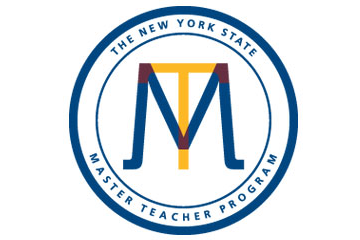
08/20/2018
More than 300 teachers from across New York State gathered at SUNY Cortland April 20-21 to learn that teaching young people really is rocket science.
And math. And computer science, animal behavior and the entire spectrum of diverse STEM-related fields.
“Convergence: Crossing Disciplinary Boundaries to meet 21st Century Challenges,” was the theme of SUNY Cortland’s fifth annual Master Teacher Program conference, which featured presentations by a NASA scientist, an applied mathematician and New York state education commissioner MaryEllen Elia.
The event drew more than a third of the 900 educators who have participated in the state’s Master Teacher program since it was launched at SUNY Cortland in 2013.
One of the main threads in this year’s discussion of collaboration and idea sharing across many different areas of expertise was how to increase opportunities for girls in science, technology, engineering and math (STEM).
“Girls in STEM has become very popular in many regions of the state,” said Dominick Fantacone, regional director of the Master Teacher Program and an adjunct lecturer in SUNY Cortland’s School of Education. “Several regions are offering girls-in STEM workshops so the conference was a chance for many of those groups to come together and share notes on what they’ve done with their particular workshops.”
The Master Teacher Program was created as a partnership between SUNY and Math for America in order to strengthen K-12 STEM education in New York’s classrooms. As a network of more than 900 public school teachers, the Master Teacher Program gives high-achieving teachers professional development opportunities to better their teaching of STEM topics to today’s students, and to pass those lessons on to their fellow educators.
As home to New York’s largest teacher education program and one of the nation’s most-respected schools for teacher preparation, SUNY Cortland was selected as the site of the first master teacher hub, and remains a pillar of the program. This year, SUNY Cortland marks its 150th year of educating students for the teaching profession.
“The program has expanded every year for the five years we’ve been running it,” Fantacone said “Most recently, we’ve expanded to include K-5 teachers as well. This fall we’ll be welcoming in a cohort of teachers representing K-5.”
Since the program’s inception, more than 100 teachers have become Master Teachers Emeritus after four years of service. Emeriti remain actively involved in the professional development network, sharing to STEM initiatives locally and statewide.
Alex Young, associate director for science in the heliophysics division at NASA’s Goddard Space Flight Center in Greenbelt, Md., presented about NASA's Parker Solar Probe in the Corey Union Function Room. Young has studied the high-energy astrophysics of cosmic gamma-ray bursts and gamma-ray solar flares.
Steven Strogatz, the Jacob Gould Schurman professor of applied mathematics and a Stephen H. Weiss presidential fellow at Cornell University, also addressed conference attendees. Strogatz is an applied mathematician who studies nonlinear dynamics and complex systems. He is the author of numerous books, including The Joy of x: A Guided Tour of Math, from One to Infinity and Sync: How Order Emerges from Chaos in the Universe, Nature and Daily Life.
Other presenters included Leigh Ann DeLyser, an advocate for computer science education and the co-founder and managing partner of Computer Science for All (CSforALL), and Lon Knappenberger, Master Teacher Emeritus and biology teacher at Westfield (N.Y.) Academy and Central School. Knappenberger spent six years researching primate behavior before entering the teaching field.
Master Teachers from around the state presented updates on their efforts to improve STEM education. Topics include “Yes We Code: Closing the Gender Gap with Girls Who Code,” “Let Students Ask the Questions!” and “How Do Birds Fly?” among many others.
“This was an opportunity for Master Teachers from across the state to come together and celebrate the work each of them is doing within the program and to dive deeper into these STEM topics in a collaborative manner,” Fantacone said.
For more information on the Master Teacher program, visit suny.edu/masterteacher.